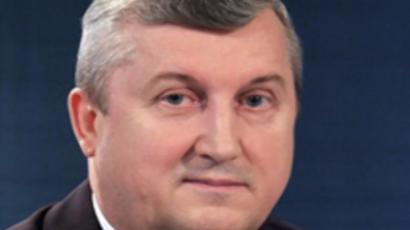Russia Close-Up: South Urals – remote but tourist-attractive for nature-lovers
Russia’s Chelyabinsk Region, located on the border between Europe and Asia in the southern Ural Mountains, still has a long way to go to become a mainstream holiday spot. But thought it lacks a developed tourist infrastructure.
In Russia they say “Those who don’t take risks don’t get to drink champagne”. Oleg Sirotin prefers tea but has never been scared of taking a chance. Seven years ago, with no experience in the tourism industry, he decided to build an elite resort almost from scratch.
It used to be a Soviet era-health center built after WW2 but fell into ruin when the USSR collapsed.
“This is a unique and extremely beautiful place with a very rich history. I wanted people to be able to enjoy it. I guess my creative side also had a part to play,” says Oleg Sirotin, businessman.
Mr Sirotin bought the land and turned it into a family holiday spot. The rate of about $US 150 for a double room is out of reach for many in the region. But in summer it’s fully booked. Yachting, water skiing and camping for children are on offer. The main clients are families from the nearby cities.
Turgoyak is one of approximately 3,000 lakes in the
“Whoever comes here once, always returns. This place has a very positive feel about it. Also, the service is good – that’s very important”, explained Ruslan Gattarov, a city of Chelyabinsk’s resident.
“The water’s crystal clear – I don’t think you can find anything like this elsewhere in our region,” adds Tatyana Gattarova.
Mr Sirotin wants to attract Moscovites, but the resort is unknown outside the region and hard to get to – the nearest airport in Chelyabinsk is more than a hundred kilometres away.
It is a common stumbling bloc in the way of the region’s tourist ambitions – remoteness, lack of the necessary infrastructure and advertising.
This has always been an industrial region. It’s always been thought here that it’s easier to make money using the existing industrial power. Better make that extra ton of steel or that extra tractor than invest in a new industry like tourism. For us it’s all new.
Just for comparison – Moscow welcomes 3.5 MLN foreign tourists and almost as many Russians every year. Only 1/4 of that number of Russians come to the South Urals, let alone foreigners – only about 3,000 make it here.
“This has always been an industrial region. It’s always been thought here that it’s easier to make money using the existing industrial power. Better make that extra ton of steel or that extra tractor than invest in a new industry like tourism. For us it’s all new,” commented Vladislav Besedin, head of Chelyabinsk region's Ministry of Tourism.
Although the region may be undiscovered for mass tourism, it’s certainly unique.
There is the place there where the East and the West officially meet. A monument built at the end of the 19th century marks the invisible dividing line. On the one side of it you are still in Europe, but just one step to make – and you are in Asia.
And, if instead of a high-class resort, you prefer something wild and off the beaten track – there you may get more than you bargained for. The Taganai National Park offers plenty of what the locals call “the Russian adrenaline rush”. Often called “The Russian Switzerland”, this is the land where mountain peaks touch the sky and where civilization is a world away and romance is in the air.
One may take a trip in a boat, put up a tent and spend some unforgettable days exploring the park’s beauties and sitting by a bonfire in the evening. Unspoiled landscapes and the pleasures of the Russian banya (kind of Russian sauna) draw in nature-lovers and adventurers. Those who venture here are truly young, and a little wild, at heart.













